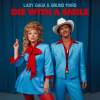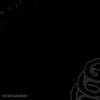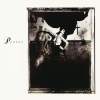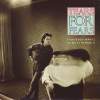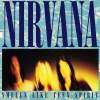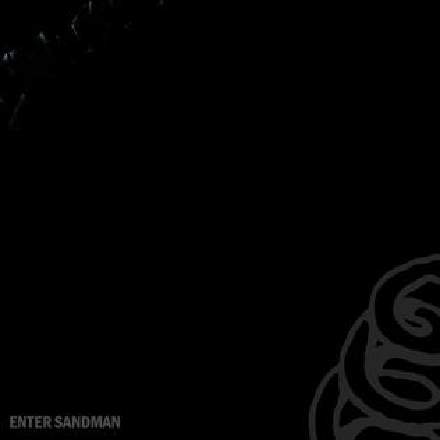
As with a lot of the best-selling albums of all time, Metallica’s Black Album has had a lot written about it. In particular, a number of pundits have asserted that one of the secrets to the band’s crossover success with this record was Lars Ulrich adapting his previous thrash-metal drumming style into a slower and simpler heavy-rock sound. But what bothers me about that assessment is that it often seems to be framed as a kind of ‘dumbing down’, whereas I think that the drum part on this particular song is tremendous. I’m no drummer, though, so this has nothing to do with an appreciation of the finer points of his performance technique – it’s all about the drum arrangement for me.
For a start, the drums provide great differentiation between the main song sections. The rumbling tom patterns of the intro (0:16-0:55), middle section (3:18-3:57), and outro (from 4:39), for instance, clearly set those sections apart from the verses, prechoruses, and choruses, while the half-time snare backbeat of the prechorus creates a clear contrast with the more traditional dual backbeats of the verses and choruses. Ulrich’s definition of the section boundaries is also very effective. Notice those lovely long eighth-note ramp-ups into the main riff (at 0:51) and final chorus (3:53), for example, as well as the shorter ones at the ends of the prechoruses (1:32, 2:24, and 3:03); or the rest bar that punctuates the end of each chorus under the line “off to Never Never Land” (1:45, 2:37, and 3:16). There are some lovely musical fills too, such as at 3:40 where two eighth-note tom rolls are followed by a backbeat snare/cymbal accent, or at 3:44 and 3:48 where other off-beat snare/cymbal accents are slotted nicely between the vocal phrases.
However, there’s one specific aspect of the drum part that I really love, and that’s the way Ulrich has taken the main guitar riff’s characteristic anticipated downbeat, and comprehensively woven that idea into the fabric of song’s rhythm. On the most basic level, the idea of the drums ‘pushing’ the downbeat of a bar (as you can hear the drums and guitars doing together for the first time when the riff first comes in at 0:54) is a great way to add urgency to any rock track – almost like the drummer is straining at the leash to rush ahead of the rest of the band! So the fact that this production features dozens of such pushed downbeats already provides a tremendous sense of energy and aggression. But rather than being merely a surface device, these pushes actually serve a profound structural purpose too, because although the riff, verse, and prechorus sections all have pushed downbeats, crucially the choruses don’t, which I think gives them a fabulous extra sense of weight and ‘arrival’.
But that’s not all, because the off-beat snare/cymbal accents also fulfil both short-term and long-term musical functions, in my opinion. On the micro-level, they deliver the same sense of rhythmic agitation that the kick-drum section-downbeat pushes do, but are sprinkled around much more liberally in all sorts of other metric locations to keep catching you by surprise – especially during the intro and outro sections. There’s also a cool kind of tug-of-war going on throughout the whole song between the off-beat and on-beat snares. Notice that the intro has only pushed snares, whereas the subsequent riff, verse, and prechorus sections (0:55-1:34) only have on-beat snares, but then the chorus combines both on-beat and off-beat snares. I also love the way that the middle section returns to the off-beat snares of the introduction, but that there’s a single on-beat snare smuggled in at 3:42 to help draw attention to the change from a spoken to a sung vocal texture at that point. And, in a sense, this forms the midway point of a long-term development from the intro, with its exclusively off-beat snares, to the outro’s more liberal intermingling of on-beat and off-beat snares.
But, of course, no discussion of the pushes in this song would be complete without praising one of the song’s best production hooks: the surprise return of the drums and main riff with the snare/cymbal off-beat accent at 4:27. There are plenty of songs where this stunt might have just sounded like a cheap gimmick, but the fact that it’s clearly cut from the same cloth as all the other off-beat accents makes it seem much more powerful and considered – notwithstanding James Hetfield’s borderline-comic “boo!”
